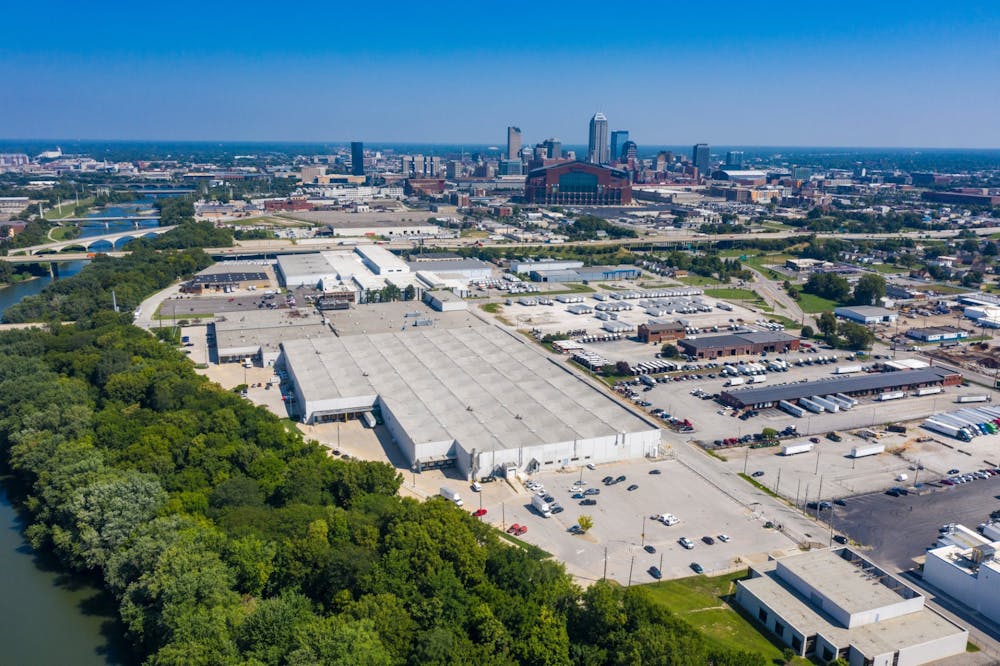Solar manufacturing startup Bila Solar announced Aug. 29 it will establish both its U.S. headquarters and a manufacturing facility in Indianapolis. In the announcement the company said it will invest $35 million into its new facility, creating more than 240 new jobs. Refurbishment of the former Eli Lilly facility Bila Solar acquired will begin this year.
The company will receive up to $6.7 million from the state in incentive-based tax credits and workforce training and readiness grants if approved by the Indiana Economic Development Corporation. According to the announcement, the tax credits will be performance-based, meaning the company will only be able to claim the incentives once employees are hired.
Erin Sweitzer, Vice President for External Communications at the IEDC, said in a text message to the Indiana Daily Student that the board will meet to approve the incentives in mid-September. An exact date has not yet been announced.
Bila Solar’s U.S. General Manager, Mick McDaniel, grew up in Indianapolis. McDaniel said he was thrilled to bring the company into the region.
“It was the most exciting thing I’ve been able to do in this industry,” McDaniel said. “We’re thrilled to be here in Indy.”
The city of Indianapolis has offered incentives for the company, in addition to larger federal incentives made possible by the $891 billion Inflation Reduction Act passed in 2022. Through this act, Congress is investing $369 billion into clean energy and energy security in the form of tax credits and incentives.
[Related: Green energy sees gradual growth in Indiana bolstered by the Inflation Reduction Act]
The IRA made owning solar more affordable for homeowners, adding a 10-year guaranteed 30% tax exemption for residential solar installations starting Jan. 1, 2022. The tax exemption increases by 10% in low-income areas and 20% in affordable housing projects.
McDaniel said the IRA has been the single most important moment for solar energy in his 20 years in the industry. He said the act has given large amounts of investment and stability to the booming manufacturing sector.
“With the passage of that act, there is now a 10-year window for homeowners and businesses to take advantage of tax credits, plus a lot of other incentives for manufacturing,” McDaniel said. “Really, it’s the stability though, that long-term outlook that’s going to encourage all this investment.”
To ensure the company can take full advantage of the secured 10-year window, McDaniel said the company is racing to open the facility’s manufacturing center as soon as possible. He said the company is currently set to open one of its two manufacturing lines June 1, 2024. He said as demand increases, the second line will open in 2025.
When both lines are operational, the manufacturing facility will produce one gigawatt of its solar modules, equivalent to 5,000 individual modules daily.
McDaniel said the company’s solar modules are unique compared to other solar panels on the market. The modules do not have aluminum edges or glass panels as most traditional solar panels do, making them very thin and lightweight.
[Related: Bloomington city council passes resolution to create regional climate coalition]
“That’s really been the innovation at Bila, to get rid of the glass, get rid of the frame, and integrate this aerospace polymer at the front side of the module,” McDaniel said.
While traditional solar panels are used in all markets today, McDaniel said lightweight solar modules will be more useful in weight-sensitive environments such as on rooftops that originally could not bear the weight of traditional solar panels, as well as on vehicles.
McDaniel said their modules will last around 25 years, but as solar panel technology improves, consumers could expect to replace their modules with better models before their lifespans end.
“Overall, crystalline-silicon solar panels will produce power for a long time,” McDaniel said.



